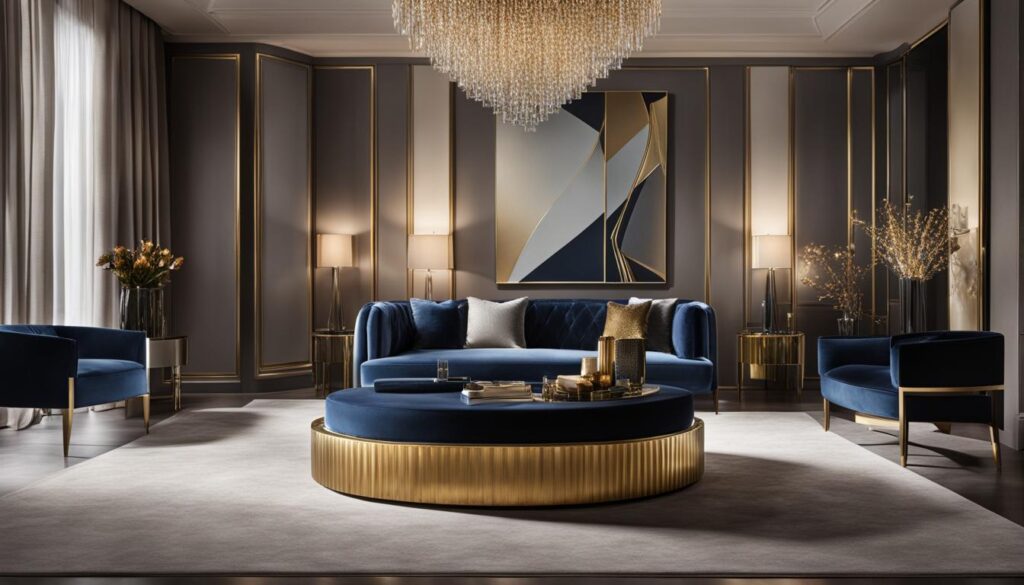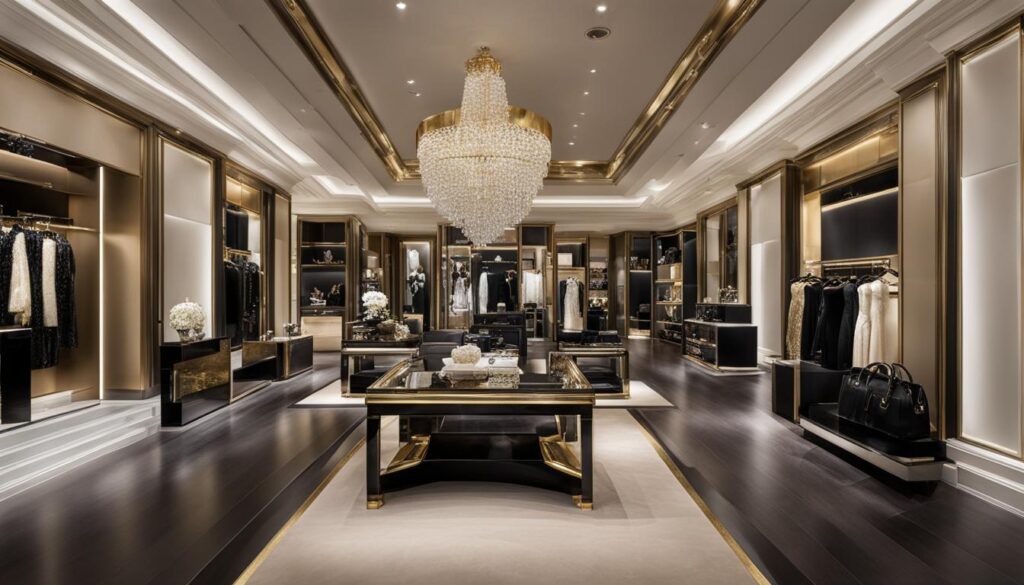The luxury goods industry has experienced a remarkable surge in recent years, defying economic expectations and cementing its position as a booming sector. Even amidst the challenges posed by the pandemic, 2021 and 2022 have emerged as the most successful years ever recorded for luxury brands.
Sales of high-end products, encompassing clothing, accessories, beauty products, and home goods, have witnessed a significant upswing, propelled by a growing desire for premium goods. Luxury conglomerates such as LVMH have emerged as the most valuable companies in the sector, reaping substantial profits and solidifying their dominance.
Notably, the appeal of luxury goods reaches beyond the affluent consumers who form the industry’s core demographic. In an unexpected turn, middle- and low-income consumers have become active contributors to this luxurious market, showcasing the resilience and broad appeal of luxury brands across diverse income brackets.
One of the defining characteristics that sets luxury goods apart is their ability to achieve higher profit margins compared to other industries. This profitability is a testament to the corporate strategies employed by luxury brands, which have become increasingly adept at capturing the market and satisfying consumers’ desires for exclusivity and premium experiences.
Key Takeaways:
- The luxury goods industry has seen unprecedented growth in recent years, particularly in 2021 and 2022.
- Sales of high-end products across various categories have surged, indicating a strong appeal for luxury brands.
- Middle- and low-income consumers are actively participating in the luxury market, contributing to its growth.
- Luxury brands enjoy higher profit margins due to effective corporate strategies.
- The industry’s ability to cater to diverse income groups attests to its broad appeal and resilience.
The Psychology of Luxury Buying
The appeal of luxury goods goes beyond economic factors. Luxury purchases are often driven by the desire for status and exclusivity. While the wealthy can afford luxury goods without hesitation, even middle-class consumers are increasingly participating in the luxury market.
Luxury brands provide a sense of status, and higher prices are often associated with higher status. Affluent consumers are willing to invest in premium products and experiences to demonstrate their luxury lifestyle to others.
Moreover, luxury goods have become popular in pop culture and are seen as a social symbol. Owning luxury brands is not just about the product itself, but also a way to convey a certain image and social standing.
The Role of Social Media
Social media platforms play a significant role in influencing luxury market trends. Influencers and celebrities showcasing their luxury purchases on platforms like Instagram have a powerful impact on consumer preferences and buying behavior.
Luxury brands are increasingly leveraging social media to engage with consumers and create an aspirational lifestyle image. They use platforms like Instagram and YouTube to showcase their products, share brand stories, and connect with their target audience.
“Luxury brands are no longer just about products; they represent an entire lifestyle.” – Michael Kors
The Growing Importance of the Younger Generation
The younger generation, including Gen Z, is becoming a significant market for luxury brands. These consumers value individualism and self-expression, and they seek unique and exclusive products to distinguish themselves.
Additionally, the luxury market has observed the rise of younger luxury consumers who prioritize sustainability and ethical practices. These consumers are more likely to support luxury brands that align with their values and emphasize environmental consciousness.
Buying into the Luxury Experience
In recent years, luxury brands have focused on providing a luxurious and personalized shopping experience to affluent consumers. They understand that the luxury market is not solely about the product itself, but also about the entire experience surrounding it.
| Key Factors Influencing Luxury Buying | Percentage of Affluent Consumers Affected |
|---|---|
| Exclusive access to limited-edition products | 67% |
| Premium customer service | 63% |
| Personalized shopping experiences | 58% |
| Invitations to exclusive events | 54% |
The luxury market continues to evolve, driven by the changing preferences of affluent consumers and their desire for a truly luxurious lifestyle. Luxury brands that understand and adapt to these trends will continue to thrive in this competitive market.
The Changing Perception of Luxury
The luxury industry is constantly evolving and adapting to changing consumer preferences. Traditional status symbols that were once exclusive to the elite are now becoming more accessible to a wider audience. However, this shifting landscape has given rise to a new trend among the global elite – a desire for unconventional and quirky luxury items that serve as unique markers of their wealth and status.
Luxury brands have recognized the need to cater to these changing preferences and values. In an effort to attract the increasingly discerning consumer, luxury brands are embracing sustainability and environmental friendliness. This has particularly resonated with Chinese Gen Z consumers, who prioritize individualism and uniqueness in their luxury purchases.
Social media also plays a significant role in shaping the perception of luxury. The desire for luxury goods that offer online visibility and media exposure drives consumer demand. The ability to showcase luxury fashion and accessories to a wider audience has become a powerful motivator for luxury marketers.
As the luxury industry continues to evolve, it is crucial for luxury brands to stay attuned to these changing trends and adapt their marketing strategies accordingly. Embracing sustainability, quirkiness, and the power of social media are all important factors in appealing to the modern luxury consumer.

In the next section, we will explore the significance of exclusivity in luxury branding and how luxury brands maintain their appeal in the ever-changing market.
Luxury Brands and Exclusivity
Luxury brands understand the importance of maintaining a sense of exclusivity in the market. To protect their appeal, many luxury brands have strategically raised prices, targeting customers who can afford higher price points. This approach not only preserves the exclusivity of the brand but also helps to enhance the perceived value of their products.
However, luxury brands are also adapting to the changing dynamics of the luxury market. Recognizing the increasing demand from middle-class consumers, some retailers have started offering installment payment plans, making luxury goods more accessible without compromising the brand’s exclusivity. This approach allows luxury brands to tap into a wider consumer base, capturing new market segments and diversifying their customer portfolio.
“Luxury is the necessity that begins where necessity ends.” – Coco Chanel
The Perception of Luxury
In recent years, the perception of luxury has evolved, and traditional status symbols are taking on new forms. The global elite now seeks unconventional and quirky luxury items that communicate their wealth and status in unique ways. Luxury brands are adapting to this changing landscape by incorporating distinctive designs, limited editions, and collaborations that showcase exclusivity in unconventional ways.
Moreover, luxury consumers, particularly the younger generation, are prioritizing individualism and self-expression through their luxury purchases. They seek brands that resonate with their personal values, such as sustainability and social responsibility. Luxury brands are responding to this trend by incorporating sustainable practices in their manufacturing processes and actively engaging in initiatives that give back to society.
The fusion of exclusivity, unique designs, and aligning values attracts luxury consumers who value the perceived authenticity and distinctiveness of their luxury purchases. Luxury brands can leverage these evolving perceptions to drive growth and maintain their position as industry leaders.

The Role of Online Presence
The digital era has transformed the luxury market, and brands need to establish a strong online presence to engage with luxury consumers effectively. Social media platforms play a vital role in creating awareness, generating excitement, and stimulating demand for luxury products.
Luxury brands are leveraging social media influencers and celebrities to showcase their products, reinforcing the aspirational lifestyle associated with luxury goods. By strategically curating their online presence, luxury brands can create a sense of exclusivity and desirability, appealing to luxury consumers who seek validation and recognition through their luxury purchases.
Luxury Brands and Exclusivity Strategies
| Luxury Brand | Exclusivity Strategy |
|---|---|
| Louis Vuitton | Limited edition collaborations with renowned artists and designers |
| Bentley | Bespoke customization options for customers |
| Hermes | Handcrafting each product with meticulous attention to detail |
| Rolex | Strict production limits to maintain scarcity and exclusivity |
The table above showcases how luxury brands implement various strategies to maintain their exclusivity. Whether through limited edition collaborations, bespoke customization, meticulous craftsmanship, or strict production limits, luxury brands consistently prioritize exclusivity to appeal to discerning luxury consumers.
How do Luxury Goods Appeal to Smart Spenders Before they Spend Their Money?
Luxury goods appeal to smart spenders by addressing their smart spending questions. These consumers carefully consider the value and long-term benefits before making a purchase. They prioritize quality, durability, and the overall experience. Luxury brands cater to their discerning tastes, offering products that align with their values and expectations.
Conclusion
The luxury market trends indicate a strong and thriving industry, with luxury brands continuing to experience remarkable growth and profitability. Despite economic downturns, the luxury sector has showcased its resilience and ability to attract a diverse range of affluent consumers. Luxury brands have recognized the need to adapt to evolving consumer preferences and values, striking a delicate balance between exclusivity and accessibility.
While maintaining their appeal, luxury brands are making efforts to cater to the changing needs of their target market. The perception of luxury is shifting, with traditional status symbols becoming more accessible to a wider audience. At the same time, the global elite seeks unconventional and unique luxury items to convey their wealth and status.
Luxury brands are not only focusing on exclusivity but also embracing inclusivity by offering installment payment plans that make luxury goods more attainable for middle-class consumers. The industry recognizes the importance of meeting the demands of an evolving luxury consumer base while maintaining the allure of exclusivity.
As the luxury industry continues to evolve, it remains a prominent sector in the global economy. With a strong luxury market, luxury brands will continue to play a crucial role in shaping the industry’s future, adapting to new consumer preferences, and driving innovation across the luxury market.
FAQ
How has the luxury industry performed during the pandemic?
The luxury industry experienced a boom during the pandemic, with 2021 and 2022 being the biggest years ever for the industry. Sales of luxury goods across various categories, including clothing, accessories, beauty products, and home goods, saw a significant increase.
Which luxury conglomerate became the most valuable luxury company in the world?
LVMH became the most valuable luxury company in the world, with substantial profits.
Who contributes to the growth of the luxury market?
Even middle- and low-income consumers are contributing to the growth of the luxury market, showing its resilience during economic downturns.
What drives the appeal of luxury goods?
Luxury purchases are often driven by the desire for status and exclusivity. Luxury brands provide a sense of status, and higher prices are often associated with higher status.
Are luxury brands popular among the younger generation?
Yes, the younger generation, including Gen Z, is becoming a significant market for luxury brands. They seek individualism and self-expression through luxury purchases.
How is the perception of luxury evolving?
The perception of luxury is evolving, and traditional status symbols are becoming more accessible to a wider audience. However, the global elite now seeks unconventional and quirky luxury items to communicate their wealth and status.
What are the changing preferences of Chinese Gen Z consumers?
Chinese Gen Z consumers are drawn to environmentally-friendly and sustainable luxury brands. They prioritize individualism and uniqueness in their luxury purchases.
How do luxury brands maintain their appeal?
Luxury brands embrace exclusivity to maintain their appeal. Many luxury brands have raised prices to protect their exclusivity, targeting customers who can afford higher prices.
How do luxury brands cater to middle-class consumers?
Some retailers are offering installment payment plans to make luxury goods more attainable for middle-class consumers. Luxury brands understand the importance of maintaining a sense of exclusivity while also catering to the needs of evolving luxury consumers.
Is the luxury market a prominent sector in the global economy?
Yes, the luxury goods appeal remains strong, with luxury brands experiencing significant growth and profits. The industry has shown resilience during economic downturns and continues to attract a wide range of consumers.

